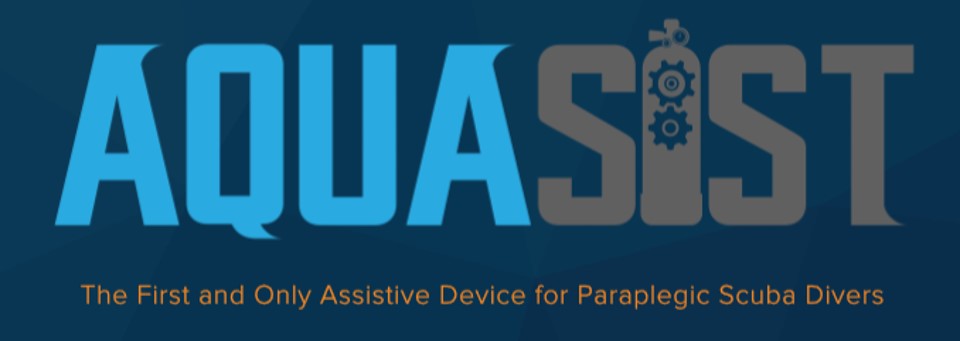
Senior Design Team 525 | Mechanical Engineering Department


Sponsor: Michael Devine Adviser: Shayne McConomy
Overview
Currently, there are no products on the market to help paraplegics SCUBA dive on their own. While in the water, disabled divers rely solely on their arms and core control to keep their body in the desired orientation. Without the help of another diver in the water, paraplegics must work harder to keep their body in its desired orientation. Because disabled divers work harder, they use up more oxygen than divers with full mobility. The increased use of oxygen causes disabled divers to experience shorter dives. Without the ability to control their legs, disabled divers’ legs can unintentionally touch objects while diving. This can lead to injuries and visibility issues. In addition, paraplegics need help getting in and out of their wetsuit. Because of these obstacles, disabled divers miss the full experience that scuba diving has to offer. The goal of this project is to design a product that helps paraplegics keep their body’s desired diving orientation, allows them to dress themselves, and keeps the divers legs from dragging.
Our design consists of a custom wetsuit that includes an adjustable float, added zippers, and a sewn section that joins the legs together in the center. The adjustable float allows the diver to adjust their body’s position in the water. The added zippers, found along the legs, will help the diver dress themselves. Joining the legs together will help the disabled diver control their legs as one unit. This product will end the need for help underwater from a dive buddy and allow disabled divers to enjoy all the freedom scuba diving has to offer.
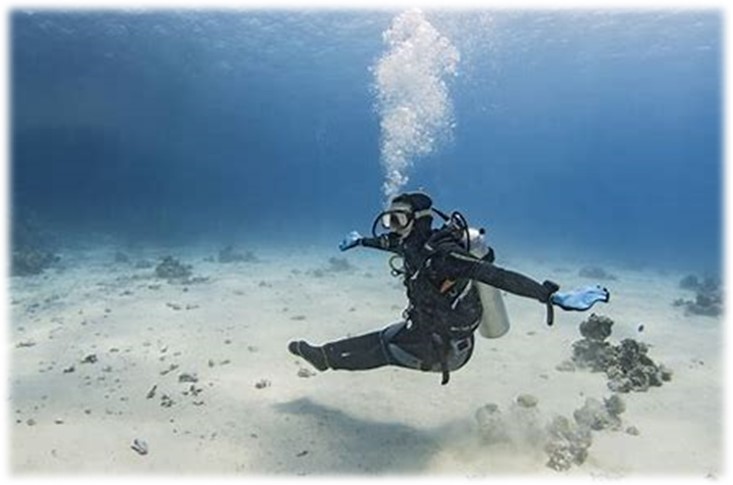
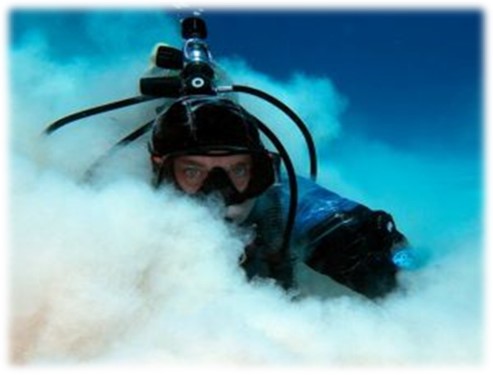
Meet the Team

DOMINIC BALLISTRERI
Design and Test Engineer
Dominic Ballistreri, a Lighthouse Point, Florida native, focus on Dynamic Systems. He specializes in rapid prototyping of various electromechanical systems. Dominic plans to pursue a career in the aerospace industry.

KYLIE HALBERT
Project Manager and Material Selection Engineer
Kylie Halbert, a Clearwater Florida native, is a senior Mechanical Engineering student graduating in May of 2019 with a focus in dynamics. She is seeking a position in Sales Engineering. She also hopes to continue her volunteer efforts with Combat Wounded Veterans Challenge every summer.
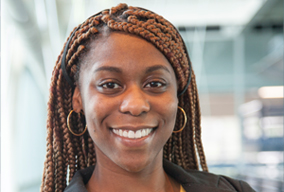
EBONY LUSTER
Web Master and Operations Engineer
Ebony Luster is a Memphis, Tennessee native and a senior in Mechanical Engineering. Her focus us in Material Science. She plans to pursue a career in designing and manufacturing prosthetics.

KEVIN NICHOLAS
Design and Test Engineer
Kevin Nicholas, a Brandon, Florida native, is a senior in Mechanical Engineering. His focus is in materials and dynamic systems. Kevin is advanced scuba certified and currently holds ASE certifications in Steering and Suspension and Brakes. Kevin plans to work for General Dynamics Electric Boat in the fall.
Our Product
Our product incorporates an adjustable float system into a custom wetsuit. The diver can move the float up and down along a foldable track to control the
position of his or her legs. This will allow the diver to control his or her trim and eliminate the need for assistance while diving. This will also keep the diver from scraping their legs against the aquatic floor. Additionally, the wetsuit has zippers along its sides for the diver
to easily get into and out of the wetsuit.

Experimental Design Aspects
The free body diagrams below show the forces acting on scuba divers. Divers with full mobility can use their arms and legs to propel through
the water. This allows them to maintain a horizontal posture and fight the drag force with relative ease. Paraplegic divers, on the other hand, only have their arms to
propel through the water. Because of this, they tend to dive in a more vertical position and have a weaker thrust force to fight against the drag force. These disabled divers, consequently, exert
more energy. Our product will assist paraplegic divers in maintain a horizontal posture so that they can generate a larger thrust force eliminate the amount of drag.
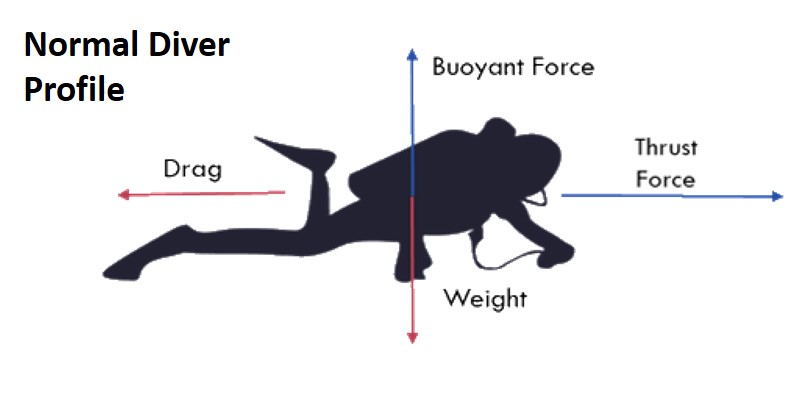
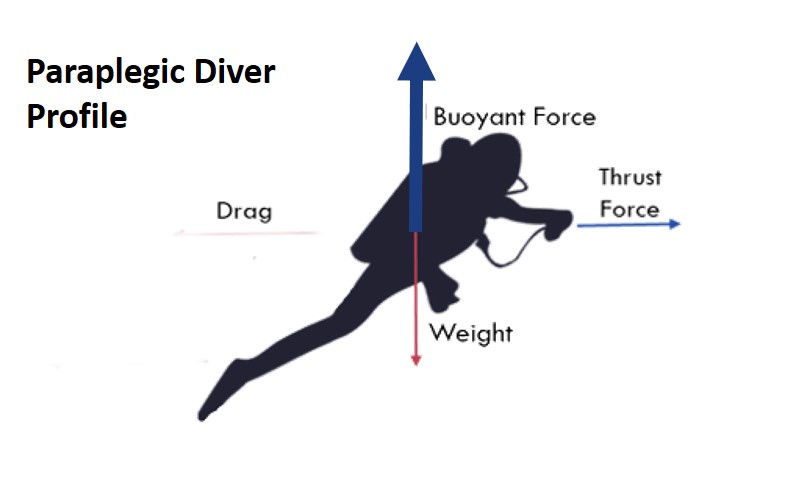
The schematic below illustrates the principle that minimizing the frontal area of a diver's profile will reduce the magnitude of the drag force.
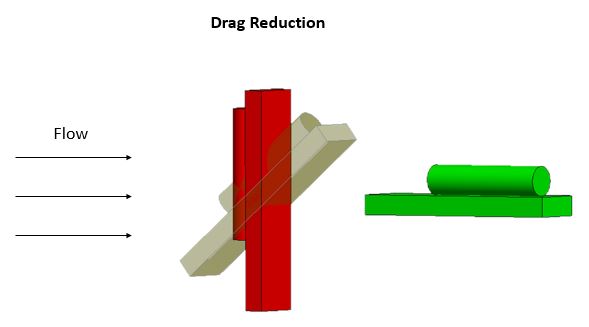
Product Demo
Diver Not Using Product Diver Using Product
Our Deliverables
Functional Decomposition Target Catalog
Target Summary Concept Generation
Our Awards and Accomplishments
$4,000 Most Viable – InNolevation Challenge
Finalists – Engineering Shark Tank
Semi Finalists – Reef Florida Governor’s Cup
Patent Pending
Contact
Email us for more information!
Dominic Ballistreri
[email: (djb12@my.fsu.edu) or (dominicbalistreri@gmail.com)]
Kylie Halbert
[email: (keh15@my.fsu.edu) or (kylie.halbert@gmail.com)]
Ebony Luster
[email: (ebony1.luster@famu.edu) or (ebonysluster@yahoo.com)]
Kevin Nicholas
[email: (kcn10@my.fsu.edu) or (kevin2005chevy@yahoo.com)]
Powered by w3.css
Overview
Currently, there are no products on the market to help paraplegics SCUBA dive on their own. While in the water, disabled divers rely solely on their arms and core control to keep their body in the desired orientation. Without the help of another diver in the water, paraplegics must work harder to keep their body in its desired orientation. Because disabled divers work harder, they use up more oxygen than divers with full mobility. The increased use of oxygen causes disabled divers to experience shorter dives. Without the ability to control their legs, disabled divers’ legs can unintentionally touch objects while diving. This can lead to injuries and visibility issues. In addition, paraplegics need help getting in and out of their wetsuit. Because of these obstacles, disabled divers miss the full experience that scuba diving has to offer. The goal of this project is to design a product that helps paraplegics keep their body’s desired diving orientation, allows them to dress themselves, and keeps the divers legs from dragging. Our design consists of a custom wetsuit that includes an adjustable float, added zippers, and a sewn section that joins the legs together in the center. The adjustable float allows the diver to adjust their body’s position in the water. The added zippers, found along the legs, will help the diver dress themselves. Joining the legs together will help the disabled diver control their legs as one unit. This product will end the need for help underwater from a dive buddy and allow disabled divers to enjoy all the freedom scuba diving has to offer.
Meet the Team

DOMINIC BALLISTRERI
Design and Test Engineer
Dominic Ballistreri, a Lighthouse Point, Florida native, focus on Dynamic Systems. He specializes in rapid prototyping of various electromechanical systems. Dominic plans to pursue a career in the aerospace industry.

KYLIE HALBERT
Project Manager and Material Selection Engineer
Kylie Halbert, a Clearwater Florida native, is a senior Mechanical Engineering student graduating in May of 2019 with a focus in dynamics. She is seeking a position in Sales Engineering. She also hopes to continue her volunteer efforts with Combat Wounded Veterans Challenge every summer.

EBONY LUSTER
Web Master and Operations Engineer
Ebony Luster is a Memphis, Tennessee native and a senior in Mechanical Engineering. Her focus us in Material Science. She plans to pursue a career in designing and manufacturing prosthetics.

KEVIN NICHOLAS
Design and Test Engineer
Kevin Nicholas, a Brandon, Florida native, is a senior in Mechanical Engineering. His focus is in materials and dynamic systems. Kevin is advanced scuba certified and currently holds ASE certifications in Steering and Suspension and Brakes. Kevin plans to work for General Dynamics Electric Boat in the fall.
Our Product
Our product incorporates an adjustable float system into a custom wetsuit. The diver can move the float up and down along a foldable track to control the position of his or her legs. This will allow the diver to control his or her trim and eliminate the need for assistance while diving. This will also keep the diver from scraping their legs against the aquatic floor. Additionally, the wetsuit has zippers along its sides for the diver to easily get into and out of the wetsuit.

Experimental Design Aspects
The free body diagrams below show the forces acting on scuba divers. Divers with full mobility can use their arms and legs to propel through the water. This allows them to maintain a horizontal posture and fight the drag force with relative ease. Paraplegic divers, on the other hand, only have their arms to propel through the water. Because of this, they tend to dive in a more vertical position and have a weaker thrust force to fight against the drag force. These disabled divers, consequently, exert more energy. Our product will assist paraplegic divers in maintain a horizontal posture so that they can generate a larger thrust force eliminate the amount of drag.


The schematic below illustrates the principle that minimizing the frontal area of a diver's profile will reduce the magnitude of the drag force.
Product Demo
Diver Not Using Product Diver Using Product
Our Deliverables
Functional Decomposition Target Catalog
Target Summary Concept Generation
Our Awards and Accomplishments
$4,000 Most Viable – InNolevation Challenge
Finalists – Engineering Shark Tank
Semi Finalists – Reef Florida Governor’s Cup
Patent Pending
Contact
Email us for more information!
Dominic Ballistreri
[email: (djb12@my.fsu.edu) or (dominicbalistreri@gmail.com)]
Kylie Halbert
[email: (keh15@my.fsu.edu) or (kylie.halbert@gmail.com)]
Ebony Luster
[email: (ebony1.luster@famu.edu) or (ebonysluster@yahoo.com)]
Kevin Nicholas
[email: (kcn10@my.fsu.edu) or (kevin2005chevy@yahoo.com)]
Powered by w3.css